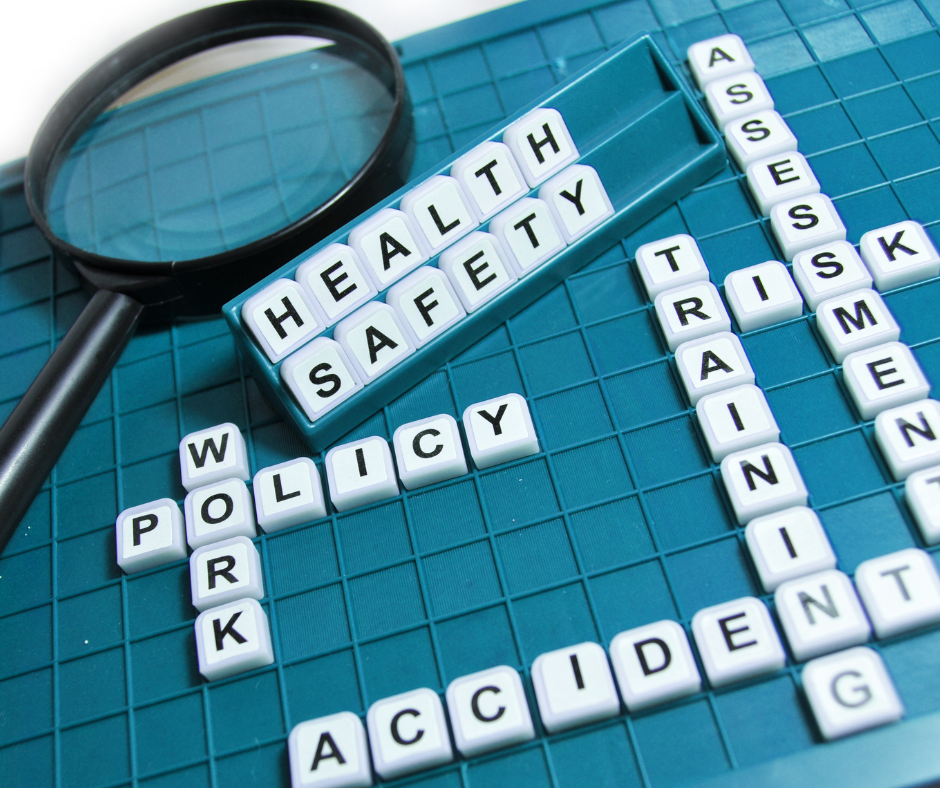
By law, as per the Health and Safety at Work Act 1974, employers have a requirement to provide any necessary information, instruction, training, or supervision to ensure the health and safety of their employees.
There is also a duty under the Management of Health and Safety at Work Regulations 1999 to identify salient situations where health and safety training is needed – such as when people start a new role, are exposed to new or increased risks, or if existing skills may need updating.
This blog will cover the key questions you may have about employee training, to help you ensure that both you and your team have the information you need to stay safe!
Why should you provide health and safety training?
 By providing health and safety training to all employees, companies ensure that all that all workers are safer in their tasks. Not only is this good practice, but it also means that the likelihood of accidents is greatly reduced, with this staff retention and satisfaction is far higher. There are also multiple financial incentives for staff health and safety training, the main being the savings that can be made from preventing product damage, loss of production and accident claims.
By providing health and safety training to all employees, companies ensure that all that all workers are safer in their tasks. Not only is this good practice, but it also means that the likelihood of accidents is greatly reduced, with this staff retention and satisfaction is far higher. There are also multiple financial incentives for staff health and safety training, the main being the savings that can be made from preventing product damage, loss of production and accident claims.
Good health and safety practices are top-down processes, whereby when managers take routine and procedures seriously, the workers also do in turn. Through adopting a strong and adaptable health and safety training system, a positive and productive environment is consistently achieved and legal duties are met.
How do you identify health and safety training needs?
 Before seeking training for employees, it is important to first establish which training will be most beneficial. To do this, managers and supervisors need to highlight knowledge and procedures they want their employees to have – this can be done through looking through risk assessment processes, method statements, etc. However, in order to improve upon health and safety, the most effective tool of establishing gaps in knowledge is through investigating old accidents and near misses and then (re)training operatives surrounding that occurrence.
Before seeking training for employees, it is important to first establish which training will be most beneficial. To do this, managers and supervisors need to highlight knowledge and procedures they want their employees to have – this can be done through looking through risk assessment processes, method statements, etc. However, in order to improve upon health and safety, the most effective tool of establishing gaps in knowledge is through investigating old accidents and near misses and then (re)training operatives surrounding that occurrence.
Through this, managers show a high level of care for their workforce through working to ensure those occurrences will not happen again. While training on reoccurring accidents should be a high priority, it is also crucial that training is delivered and maintained based on law requirements and in areas that could cause serious harm.
Training is not a one-time thing that fits all jobs and people; therefore, it is vital that with change in equipment, responsibilities, practices, etc., a new induction or training course is provided. Equally the correct type of training should be decided based on the level of danger and the person. For example, a practical hands-on course would be more appropriate for learning about complex machinery however, a toolbox talk type of training is good for topics such as workplace hygiene.
Training is useless however if it is not critically assessed upon completion. It is the employer’s responsibility to monitor any progression or regression that takes place after any new training. With this information employers must act to sustain any progression for the future or retrain to amend any mistakes/ gaps in knowledge after initial training.
Do all employees need health and safety training?
 Everyone needs to know how to work safely – the extent of this depends on their role and the working environment. Employers, managers, supervisors, and employees all need training to varying degrees depending on their usual tasks and responsibilities. Contractors and self-employed people will also need training, and some people may have more specific training needs e.g., young people, new recruits, people changing job roles, etc.
Everyone needs to know how to work safely – the extent of this depends on their role and the working environment. Employers, managers, supervisors, and employees all need training to varying degrees depending on their usual tasks and responsibilities. Contractors and self-employed people will also need training, and some people may have more specific training needs e.g., young people, new recruits, people changing job roles, etc.
How can WA Management help?
WA offer a variety of solutions for your training needs – from a wide range of in-person courses including Manual Handling, Asbestos Awareness, Working at Height, and many more delivered by our qualified trainers, to easily accessible online training that can be completed at your own pace, we can help you to get your workers the training they need. Learn more on our website or get in touch to find out how we can help!
Read more Consultant’s blogs here.
To keep up to date with the latest health & safety news and advice, follow us on social media:
